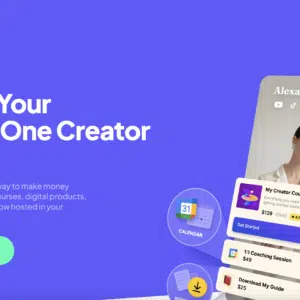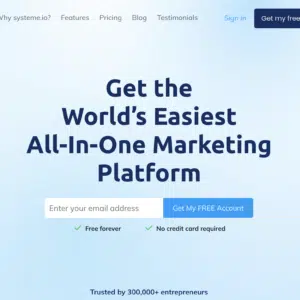Selling ebooks is a big business for many people. According to the Association of American Publishers, 2023 saw $1.3 billion in total ebook revenue in the United States alone. And according to Amazon, thousands of indie authors made $100,000 or more in 2023 — on Amazon alone. Ebook sales in 2020 went through the roof, mainly due to the pandemic, and haven’t slowed down.
As you can see, you can make money selling ebooks.
The ebook publishing process has been simplified as much as possible by aggregators and the retail giant Amazon, but it still takes some know-how. Without guidance and resources, you can easily spend hours groping around in the dark trying to write and publish a book people will buy. And, in fact, it’s best to start your research before writing your book.
Luckily, guidance is just what I’m here for. I’ll take you through the whole journey, step by step. And for the purposes of this article, I’ll stick to publishing on Amazon, since it currently holds much of the ebook market. So, read on to find out how to make your first $1,000 selling ebooks.
Want to learn about other ways to make money?
How to Create Your Ebook
Table of Contents
Many people start their ebook-selling journey with a story they want to write. They poured hundreds of hours into the book, threw together a cover, wrote a blurb, and hit publish. Then, they wait for the sales to roll in.
Unfortunately, this rarely works. Mainly because most people write for a nonexistent or oversaturated audience.
Don’t get me wrong, you need to like what you’re writing. But other people need to like it, too. And you need an existing market that’s hungry for books like the one you’re writing.
Whether you’re writing non-fiction or fiction, you need to do a few things before you can start making money selling ebooks.
Research a Bestselling Idea
To make money selling ebooks, you need an ebook to sell. And people must want to buy it. There must be a market for the book, which is why this pre-step is so important. It’ll help you determine whether the idea you have is worthwhile. And if it’s not, you can move on to the next idea. And the great part is, many people come up with great ideas in the research phase.
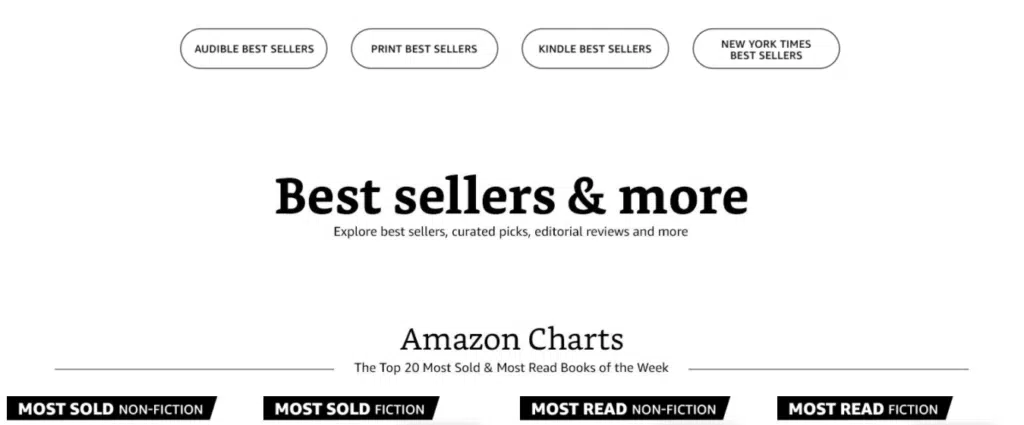
If you’re absolutely sure your book has a hungry market, you can skip this and move on to step one. But if you’re not sure, answer these questions to validate your book idea:
- Is there an existing market for your ebook?
- Is the market actually willing to pay for the book, or is it information they can get online for free?
- Is the competition so stiff that your book will be lost in the fray?
Not sure how to answer these questions? Here is some software that can help.
Ensure You Create the Different Parts of an Ebook
Even before writing the book, it’s good to know the different parts of a book. You’ll want to have a copyright page, a table of contents, acknowledgments, etc. Some formatting tools set these up for you, but you might need to do this yourself.
The front and back matter of an ebook are excellent places for email opt-ins and a list of any other books you’ve written. But more on those later.
Write and Format the Book
Since this article isn’t a “how-to” on actually writing a book, I’ll keep this section brief. There are plenty of resources for writing your book. Once you’ve written your book, format it so that it looks professional on e-readers, phones, and computers.
Here’s a handy article about book formatting for you that takes you through each step of the process.
Also, you might want to look at getting book formatting software like Atticus. This helps you make both ebooks and books and ensure they look professional.
Get a Book Cover
You must have a book cover to sell ebooks. And the cover needs to be professionally done. Or, it needs to at least look professional. Luckily, there are plenty of ebook cover creators out there, and many of them won’t break the bank. From Fiverr to EbookLaunch.com, you’ve got plenty of options.
Upload Your Ebook to Amazon
Once you have a written, formatted book and a cover, it’s time to upload them both to Amazon. To do this, you must have a Kindle Direct Publishing (KDP) account. If you already have an Amazon account, this will be a breeze. It’s absolutely free and they walk you through the steps.
But, before you hit publish, read the steps below for tried-and-true tips on making your first $1,000 selling ebooks!
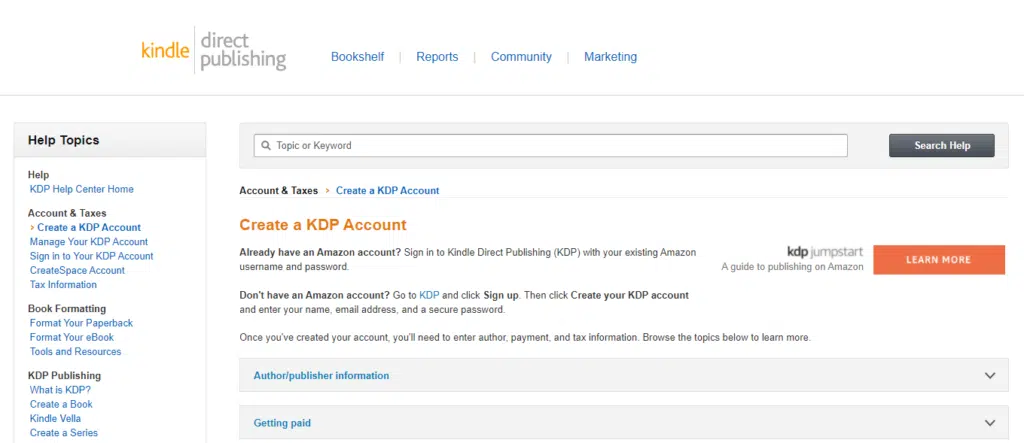
Your Guide to Selling Ebooks
Okay, here’s where the fun begins. You have a flawless ebook (or nearly flawless, anyway), and a professional book cover, and you know there’s a market. But knowing there’s a market and tapping into it are two different things. That’s what these steps are all about: tapping into your market to make your first $1,000 — and beyond.
The best way to sell ebooks is:
- Selecting the right keywords
- Selecting best-selling ebook categories
- Creating a special launch
- Enrolling in KDP Select and KU
- Setting up a book promotion push
- Contacting book review sites
- Setting up Amazon Ads
That’s it. So, with that, let’s begin…
Step 1: Select the Right Keywords
Keywords are key to making money selling ebooks (see what I did there?). They can mean the difference between obscurity and daily sales. The right keywords tell Amazon when to show your book to shoppers. There are three important areas where you’ll use keywords when publishing ebooks on Amazon.
- 7 Kindle Keywords: Amazon allows you to fill out seven keywords of 50 characters each when publishing your book.
- Title and/or Subtitle: Having choice keywords in your book’s title or subtitle can help you gain visibility and sales. Subtitles are more important for non-fiction but can also be helpful for fiction, on occasion.
- Book Description: Keywords in the book description can help customers find the book. Better yet, they can help convince customers that your book is the one for them!
So how do you find these keywords?
Easy. Use Publisher Rocket to do quick searches and see which keywords are highly competitive and which ones aren’t.
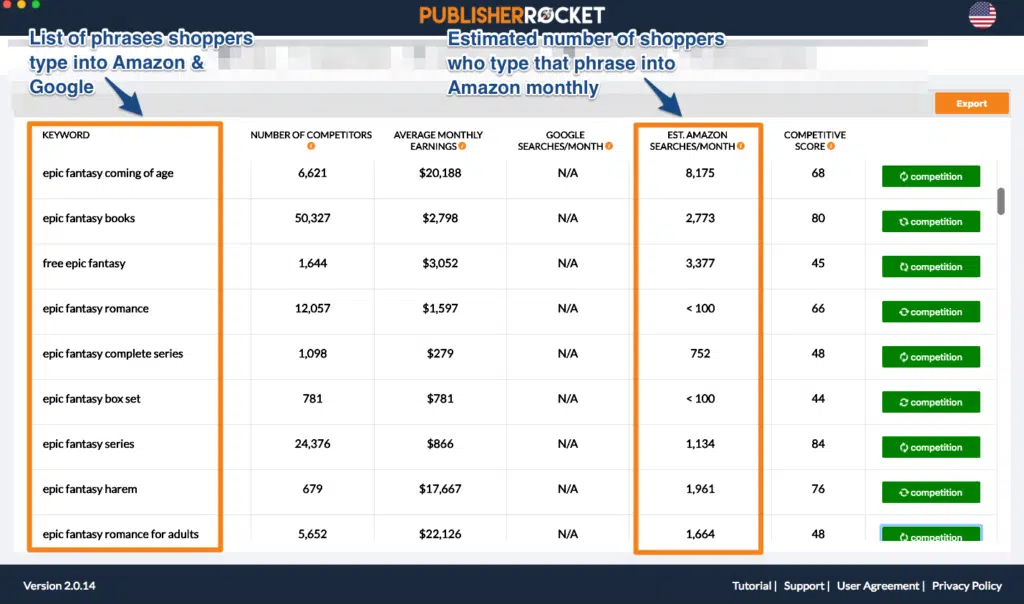
This is important for finding a niche audience. Going for competitive keywords means you’ll have to spend more time and effort marketing to get sales. But if you target a less competitive keyword, you can see results faster and with minimal effort.

You can find some of this information manually, but the amount of time it takes far outweighs the one-time price of Publisher Rocket.
Step 2: Select the Right Categories
If you select the right Amazon ebook categories, you will become a bestselling author. That’s amazing because not only will that help you sell more books, but it will also allow you to tell your friends, and family that you are a bestselling author. Furthermore, it’s a great credential to put on your resume, blog, about page, inquiry, etc.
How does one become a bestselling author?
Now, that might sound daunting, but it really isn’t. That’s because there are over 14,000+ book and ebook categories to choose from.
The key is finding the right category (you can choose 10 for your book if you follow these steps) that fits your book and has the highest chance of being a bestseller.
Now there is a manual way of doing this, however, there is no list of the 14,000+ categories and you’ll need to do a tedious amount of research and guessing. You can also use Rocket which has a list of all the ebook and book categories. It will even tell you how many books you’d need to sell that day to become a #1 bestseller.
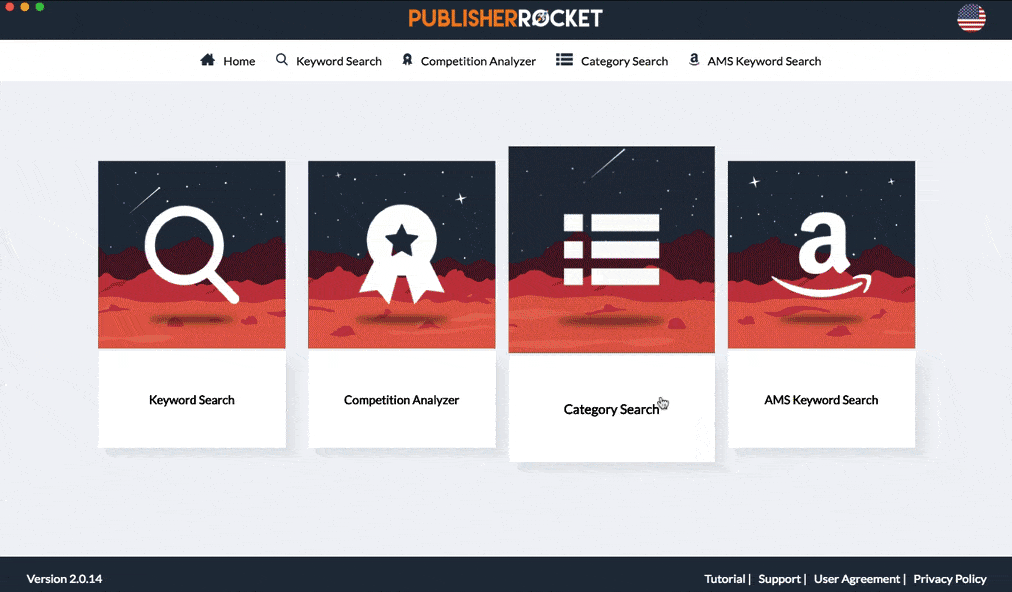
And with over 14,000+ ebook and book categories to choose from, there is no way you can’t hit that bestseller status.
Step 3: Create a Special Launch
Launching an ebook well can help you get noticed by Amazon’s algorithm. But it takes some serious plate-spinning to do this well. There are a lot of moving parts and several different philosophies when it comes to a successful launch.

You usually want to give yourself a week or two between uploading your ebook to Amazon and officially launching your ebook. But this doesn’t mean you can’t do a soft launch where you publish your ebook and ask your network for reviews. It just means you’ll need a little time to go through the book and make sure everything looks good and that there are no formatting errors.
Let’s take a look at your different launch options.
Enrolling in KDP Select (Kindle Unlimited) to Help Your Launch
For new authors, enrolling in KDP Select is probably the easiest way to give your ebook a little boost. KDP Select means that you can’t sell your book anywhere else besides Amazon for the enrollment period, which is 90 days. But it comes with some serious perks that can help you launch, successfully.
For example, for every enrollment period, you can do either a free book promotion or a Kindle countdown deal, where your book is sold for a discounted rate for up to five days.
Both options are good for gaining visibility and encouraging people to buy. Of course, a free book promotion won’t gain you any profits, but it can really boost your book’s ranking and can also help you get reviews (if you ask for them).
Non-KDP Select Launches
If you don’t want to limit yourself for a minimum of 90 days with exclusivity to Amazon, you can opt-out of KDP Select. You might want to sell your book to a larger audience by getting it into online outlets like Google Play, Kobo, Barnes & Noble, and others.
However, a word of warning: If you’re new to self-publishing, I suggest against focusing on “going wide” as we call it. It can be difficult to keep up with publishing one book on Amazon, let alone on a handful of other platforms. Once you know your way around Amazon, you’ll have the foundation for self-publishing on other platforms, as well.
Some tactics for a successful launch for non-KDP Select ebooks include:
- Offering your book to your extended network for $0.99 for the first week or so and asking them for honest reviews. The low price makes for less resistance.
- Once you’ve got a few reviews, raise your price ($2.99 or $3.99 is best for most ebooks).
- You can also coincide your $0.99 launch price point with a book promotion push, which I’ll cover below.
- Amazon generally frowns on reviews from immediate family and close friends, so resist the urge to have them write you a good review — Amazon will probably take it down.
Launching With an Email List
Most new authors don’t have an email list to which they can promote their new ebook. But if you have one, send out a couple of emails in the weeks before launch day, telling your list about the book.
Of course, the book needs to be relevant to the email list. So if you wrote an epic fantasy book and your list comes from your blog about personal finance, you shouldn’t promote your book to that list. It’s a good way to get a bunch of unsubscribes, even if you do get a couple of sales out of it.
Use Social Media
If you don’t have an email list, don’t worry. You can use your social media following to boost your launch. Whether you’re doing a KDP Select promotion or you’re simply dropping your price, you can use free Facebook promotion groups (make sure promotion is expressly allowed), your Twitter following, and even your Instagram or TikTok accounts.
How active you are on those platforms goes a long way to how much success you’ll have. Still, every little bit helps when it comes to launch time.
Step 4: Set Up a Book Promotion Push
Hopefully, you’ve made a bunch of sales during your official launch. It would be nice to simply sit back and watch sales come in ever after. Unfortunately, it doesn’t usually work that way. Remember that there are an estimated 2,000 books published every day! Even big names have to work to keep their sales going strong.
This is where book promotion sites come in handy. Written Word Media, home of FreeBooksy and Bargain Booksy, is a favorite paid promo site. But there are plenty of free book promotion sites out there that can help you sell more books.
All of these sites have slightly different requirements, but you’re sure to find a bunch of them that will be glad to promote your book to their audiences. (I’ve already done a lot of the research for you in that article I linked to above.)
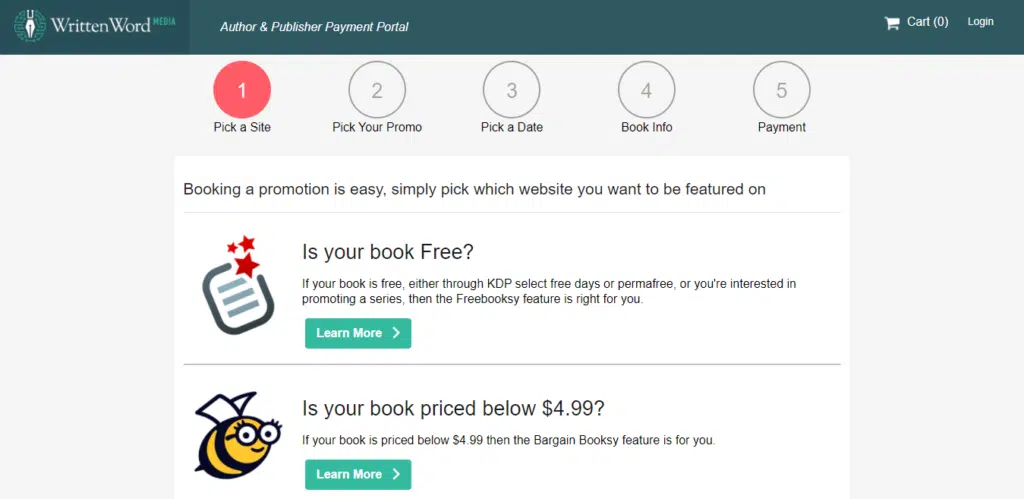
When you decide to do this generally depends on how well your book is doing. You can wait for sales to dip a little bit before putting the word out, or you can do it soon after your launch. Most people wait because they like that little bump in sales it gets them — which can also help Amazon recommend your book to customers — for free!
Typically, you’ll want to contact these sites at least two weeks before starting the promotion. Planning ahead (and being flexible) is a real help here.
Step 5: Contact Book Review Sites
Book review sites can help you get some good publicity around your ebook. Review sites can help you with the social-proof aspect of book marketing. In fact, Amazon has an Editorial Reviews section that every author should take advantage of.
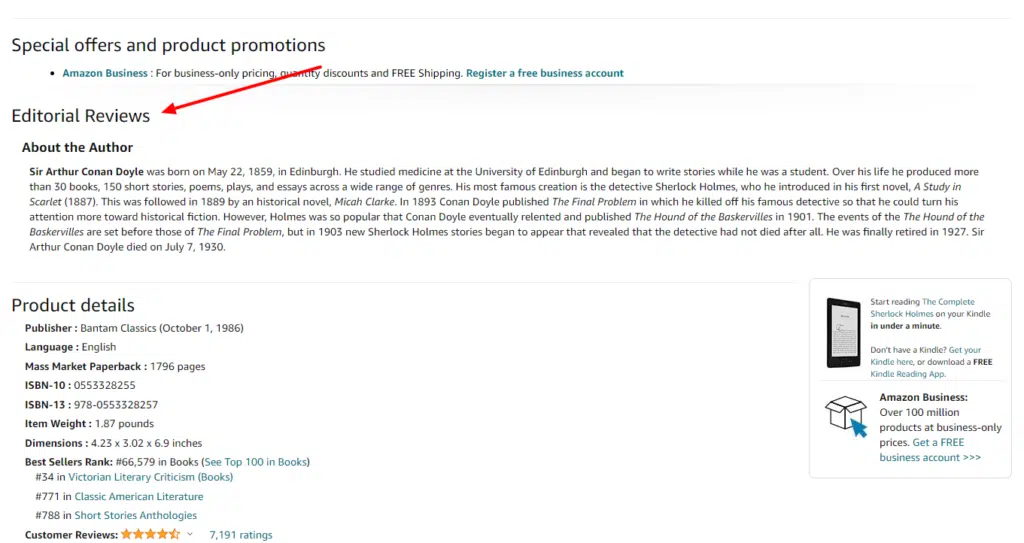
Book review sites provide a service. They have readers who sign up to read books and write reviews about them. Sometimes, these readers are just normal folks who want to read books for free (most sites require that you provide a free ebook copy for the reader). Other times, they are professional or semi-professional reviewers who are paid for their time.
Kirkus Reviews is a well-known review site that charges a pretty penny ($425 last I checked). But if you get a good review from Kirkus, you’ve got bragging rights and are likely to get some solid sales simply because their name carries weight.

But you must realize that a good review is far from guaranteed. And, although most review sites don’t charge near as much as Kirkus, they do usually charge a reading fee of some sort. So if you’ve got some glaring issues with your ebook, you might want to wait until you fix them to contact a review site.
If you’re confident in your ebook, some of these review sites are a good way to get additional reviews on Amazon as well as some great quotes for your Editorial Reviews section. Some sites even include your ebook in their newsletter or on their website, which helps you generate more sales. You could even get on a list of the best books — the key is finding a review site in your genre or subject matter and asking them to review your book. It can do wonders for your conversions.
Pro Tip: Avoid any sites that guarantee a good review. This is against Amazon’s rules about reviews. You can’t demand a good review in exchange for anything, not even for a free copy of your ebook. The reviewer must be free to share their own opinion about the book.
Step 6: Set Up Simple Amazon Ads to Keep Traffic Going
Now that your book is out and you have some reviews coming in, it’s time to start generating traffic through Amazon ads. With these, you can keep selling ebooks, even after you stop doing book promotions and pushing for sales. Amazon helps keep your ebook in front of book shoppers.
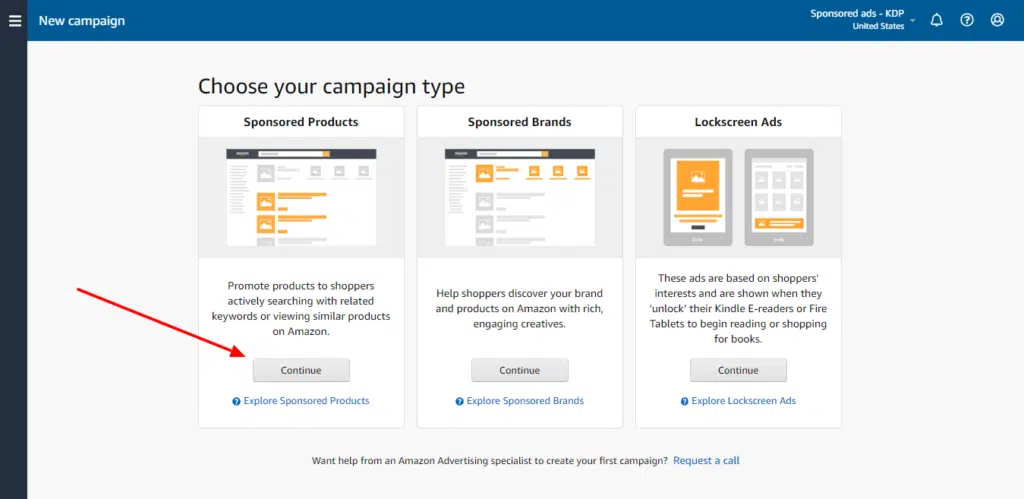
You can create Amazon ads that show your ebook in the search results, on another book’s sales page, or on the lock screen of a Kindle.
Although the learning curve can feel a bit steep, there is a free full video course that authors can tap into that will give them all the necessary information for creating profitable Amazon ads for their ebooks.
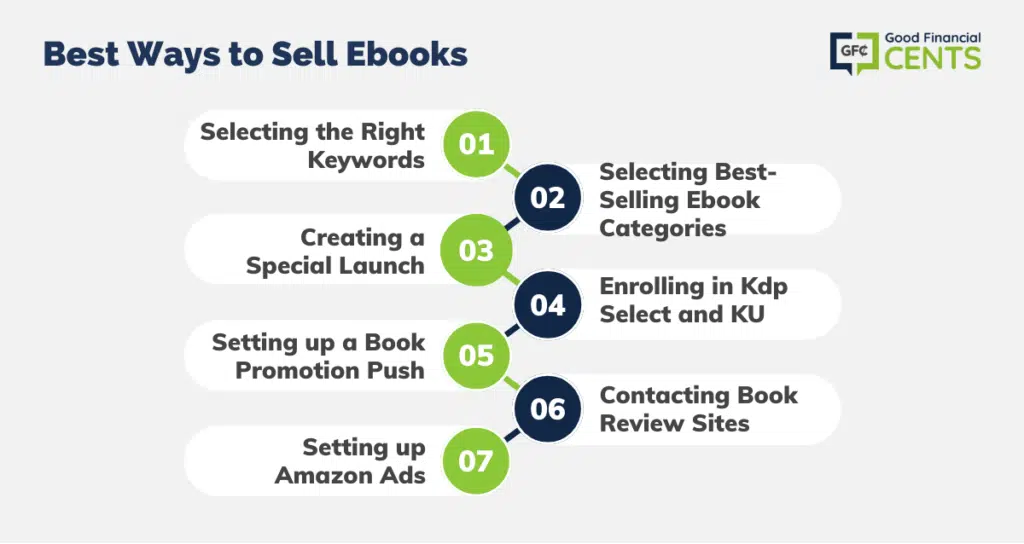
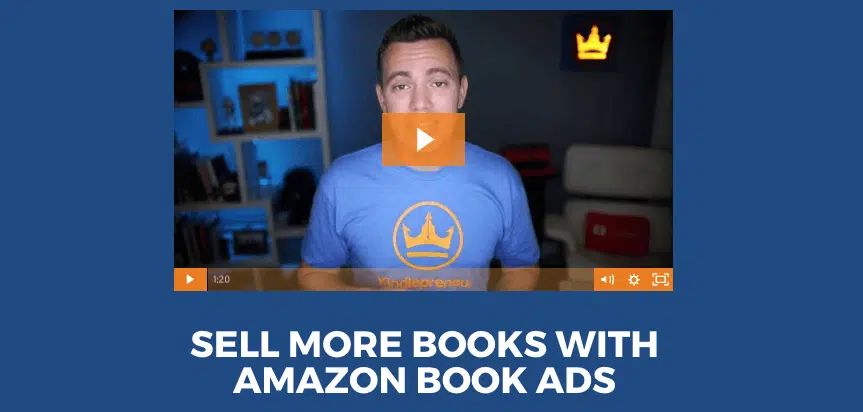
Dos and Don’ts of Selling Ebooks
When it comes to making money selling ebooks, there are certain things you should and shouldn’t do. I’ve mentioned some of them briefly in the steps above, but let’s take a look at a few I haven’t covered.
Get Good Reviews
Reviews provide the all-important social-proof aspect that is essential for marketing. The best way to get reviews is to ask for them. You should definitely put an ask at the end of your book. You can even put a link to the review page; many people have no idea where to go to write a review on Amazon, so a link helps.
To get the link, scroll down on your book’s product page and look on the left side. You can snag the link from here:
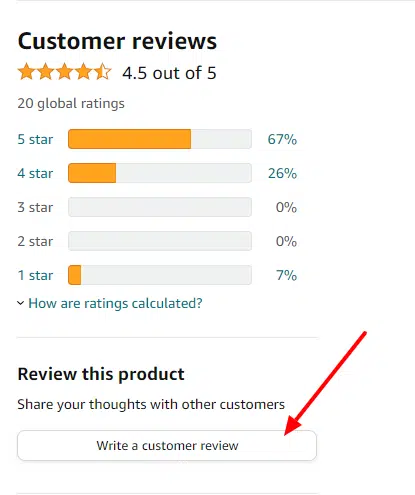
The link won’t work for you because you can’t review your own ebook. But it will work for others, they simply have to log into their Amazon account, first. Unfortunately, if they don’t have an Amazon account (or haven’t spent $50 through Amazon) you’re out of luck.
It’s also essential to ask your network to review the book. Many authors feel that this is “salesy,” but you’d be surprised at how many people are willing to write a review if you just ask.
Use Amazon Associates to Make a Little Extra Money
It doesn’t take long to sign up for an Amazon Associates account, which is Amazon’s affiliate program. You can then get an affiliate link for your book and post it on your website.
When anyone uses that link to buy your ebook (or anything else within a 24-hour period), you get a small percentage. That means if someone clicks on your affiliate link and then decides to buy a $2,000 pool table from Amazon, you’ll get a percentage! Not bad for just a few minutes of your time.
Allow For Email Opt-in
If you’re serious about selling ebooks and you think you’ll be writing more of them, creating an email list is essential. You can put an email opt-in in the front and back of your book to increase the chances of gaining subscribers.
The standard practice these days is using reader magnets. Reader magnets offer a freebie in exchange for a reader’s email address. This is usually a novella or a short story for fiction, or a spreadsheet or bonus PDF for non-fiction. It just needs to be relevant to the book to work well.
Don’t Skimp on the Book Cover
As I mentioned briefly at the beginning of this guide, a professional book cover is key. Readers can spot a DIY book cover quickly, and most of the time they’re going to skip it for something that looks a little better.
If you have experience with book cover design, by all means, make your own cover. But for most of us, paying a cover designer is one of the best investments we’ll ever make in our book (aside from the hours writing it, of course).
The price range for this is extremely wide. You can even get a premade book cover for under $100 — if you can find one that looks good and works for your book. Otherwise, check with Fiverr, Upwork, Reedsy, Ebook Launch, or simply Google “Ebook cover design.” There are plenty of great options out there.
Don’t (Ever) Pay for Reviews
Paying for reviews can actually get you banned from Amazon. This may seem like splitting hairs, but paying a legitimate book review site is totally fine because you’re not paying for a certain outcome.
But a quick search on Facebook will yield groups where readers gather, promising good reviews in exchange for cash, Amazon gift cards, free books, and all kinds of other things. To stay within Amazon’s guidelines, there can’t even be the suggestion of an “incentivized review.”
In fact, most legitimate review sites don’t allow you to have direct contact with the reviewer. You may not even know who it is until the review is out there in the world.
This is why legitimate review sites are OK but “incentivized reviews” are not. The same goes for review swapping with other authors. Meaning, “I’ll give your book a review if you give mine one.” Amazon considers this an incentivized review. Best to stay away from practices like this.
Other Resources and Tools Needed
Although it’s not imperative that you have any of these tools, they can certainly help you on your book publishing journey. But it’s ultimately up to you if you want to make the investment.
Publisher Rocket
If you’ve read the “Select the right keywords” and “Select the right categories” sections (and I hope you have), you’ve seen a little of what Publisher Rocket can do. It can save you hours and hours of mind-numbing, hair-pulling research. And it can also help you determine how stiff the competition is for a certain genre or subgenre.
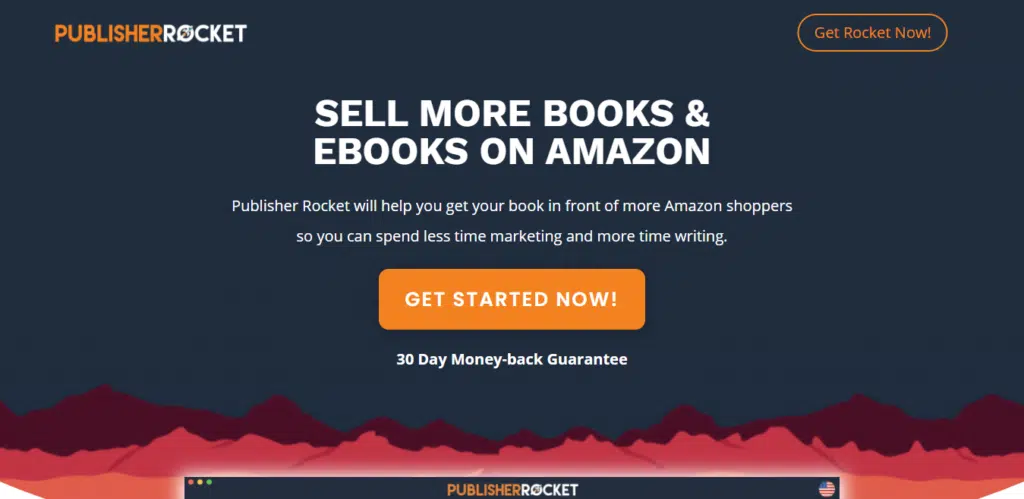
If you’re planning on doing Amazon ads for your books, I’d go so far as to say that this is a must-have. Luckily, Publisher Rocket has only a time cost of $97. That gets you all updates and upgrades as well.
Scrivener
Scrivener is a big name in the book-writing world and is available on Mac or Windows. It has been around for a long while and is a one-stop shop for writing, editing, and formatting. Students, academics, poets, and all kinds of other writers swear by it.
However, it has one major drawback: it’s notoriously difficult to learn. It’s complex because it has so many features. But that complexity is a bit too much for some people. If you’re willing to put in the time to learn how to use Scrivener, it’s a great tool.
Atticus
Atticus is a book writing and book formatting software. It lets you write your books, and then easily format them as an ebook and book. With this software, you can create beautiful book designs and look professional without having to hire a specialist.
It’s simple and elegant and totally awesome. Currently, there’s a waitlist for the tool.
Next Actions to Take
Well, we’re wrapping it up. You’ve read all about how to make your first $1,000 selling ebooks. But you may be wondering what to do next. Your book is up, you’ve followed the steps, and your Amazon ads are running. What now? What about the next $1,000?
Well, it’s simple, really: Do it again. Write and publish your next book. But make sure that you have a way to collect reader emails. And point each new book you have to the other ones you’ve written. You can do this in the back matter of your book, and even in the front matter, if you want.
The more books you have, the more money you can make by selling them. When someone finishes one ebook, they may see that you’ve written other ones and purchase them. And with a mailing list, you can gather your fans and contact them directly! How cool is that?
So keep it up. As your catalog grows, so should your income. And that’s a beautiful thing.
Consider Audiobooks
You may also want to consider turning your ebooks into audiobooks. This can create another income stream for you. The audiobook market is growing and it probably won’t stop any time soon. So consider narrating your own book or paying someone else to narrate it for you. This is a logical next step for ebook authors and it’s becoming easier to do.
Summary – Making Money Selling Ebooks
Making your first $1,000 selling ebooks may seem like quite the journey. And you’re not wrong. There are quite a few things to do. But, many of the most successful self-published authors publish a few books a year. And they treat it like a business, which is definitely what you should do, too.
As with anything else, the more you do it, the easier it gets.
With the right tools and a drive to succeed, the first $1,000 you make will seem small-time in no time. Then you’ll be looking at your first $10,000 and, eventually, your first $100,000.
So keep writing, keep publishing, and keep learning!



